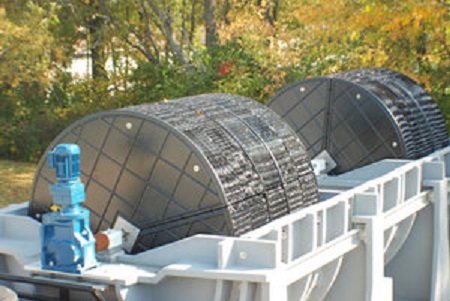
News
Technology
How-to
Management
Rotating biological contactor boosts RAS filtration, says manufacturer
November 1, 2019 By Nestor Arellano

Rotating biological contactors (RBC) provide better performance than typical filtering mechanisms used in recirculating aquaculture system (RAS) applications, according to a manufacturer of water management technologies.
Indiana-based Advanced Aquaculture Technologies said it has developed a rotating biological contactor specifically for the intermediate-sized RAS facility.
Biological filters are a necessity for RAS operators since these devices enable the conversion of soluble wastes to solids through bacterial growth (such as the nitrogenous wastes associated with ammonia and urea), according to Gary Miller, president of Advanced Aquaculture Technologies, in an article in Government Europa.
There are many types of filters used in aquaculture. Traditionally these filters have a stationary bed or a moving bed of material.
One of the oldest concepts is a trickling filter, said Miller.
As aquaculture facilities become larger, and the number of fish grows, the amount of food needed for the stock grows. “…a larger footprint can be required by the filter,” he said. “However, the degree to which the water is treated does not increase.”
“The only way to improve the performance of a trickling filter is to make it taller; requiring taller buildings and greater pumping expense to lift the water to the top of the filter,” Miller added. “As the filter becomes taller, it allows the bacteria to specialize; with each group feeding on the wastes of the bacteria directly above it.”
Trickling filters also require the use of water to flush away the solids.
Moving bed filters, on the other hand, contain a variety of material as medium such as uniformly graded sand or plastic pieces of various shapes and sizes. The system will agitate the medium to generate a self-cleaning process and keep the medium from settling.
This process can consume a lot of energy and require specialized mechanical filtration afterward to collect the very fine material generated by this agitation.
The process can also free up very fine bacteria into the water. These bacteria can promote gill disease, said Miller.
By contrast, Miller said, more advanced RBCs offer better performance.
“For example, imagine a tall trickling filter placed on its side in a trough, and the medium on a central shaft and turned at a slow revolution per minute (rpm),” he explained. “The contact time that the water has with the medium in a trickling filter is short (measured in seconds) and is regulated by the filter height and flow rate.”
As the shaft is rotated, all of the medium surface area is constantly wet. As the shaft rotates, the water rushes into and out of the medium, providing constant flushing of excess bacterial growth, aeration, and CO2 stripping, he said.
A RBC system can also significantly reduce the energy budget for recirculating the water in RAS facilities, said Miller.
Print this page